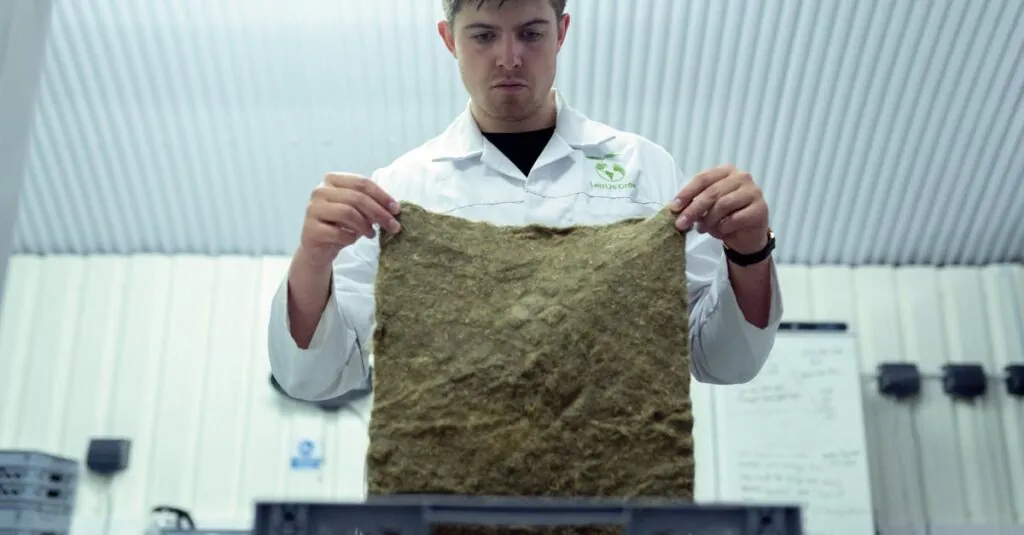In a world where the only thing greener than a salad is the technology keeping our planet in check, environmental monitoring tech is the unsung hero of sustainability. Imagine a superhero equipped with sensors instead of a cape, tirelessly working to protect air, water, and soil quality. This tech doesn’t just sit around looking pretty; it dives into data and emerges with insights that can save the Earth, one byte at a time.
Table of Contents
ToggleOverview of Environmental Monitoring Tech
Environmental monitoring technology actively safeguards the planet through the use of advanced sensors. This tech plays a vital role in providing insights into air, water, and soil quality.
Importance of Environmental Monitoring
Environmental monitoring holds significant importance in addressing climate change and ecological degradation. It assists in effective resource management, ensuring sustainable usage of natural resources. By tracking pollution levels and identifying environmental threats, this technology aids policymakers in making informed decisions. Maintaining biodiversity becomes easier with early detection of harmful substances. Ultimately, effective environmental monitoring promotes health and well-being for communities and ecosystems.
Key Applications
Various sectors utilize environmental monitoring technology for enhanced resource management. Agriculture relies on it to optimize irrigation and pesticide use, promoting sustainable farming practices. Urban planning incorporates monitoring to assess air quality and manage pollution effectively. Industries adopt this tech to minimize waste and comply with environmental regulations. Additionally, conservation efforts benefit from real-time data, allowing quicker responses to habitat changes. Thus, the versatility of environmental monitoring is essential across numerous fields.
Types of Environmental Monitoring Tech
Various technologies exist to monitor environmental conditions, providing essential data for sustainability efforts. Two notable categories are remote sensing technologies and in-situ monitoring devices.
Remote Sensing Technologies
Remote sensing technologies utilize satellites and aerial sensors to collect data over large areas. These technologies assess land use, monitor vegetation changes, and track atmospheric conditions. Imagery analysis supports understanding of environmental phenomena such as forest cover loss and urban sprawl. Sensors detect changes in light patterns and thermal readings, creating detailed environmental maps. Applications for remote sensing include climate research, disaster management, and agriculture, enhancing decision-making based on real-time data.
In-Situ Monitoring Devices
In-situ monitoring devices offer real-time data collection directly at specific locations. These devices measure air quality, soil properties, and water quality, providing localized insights into environmental conditions. Sensors can track pollutants, pH levels, and moisture content, enhancing resource management strategies. Results from in-situ devices allow for immediate responses to environmental changes. Applications range from industrial operations to agricultural practices, contributing to sustainability efforts across sectors.
Benefits of Environmental Monitoring Tech
Environmental monitoring technology offers significant advantages in sustainability efforts. Key benefits include enhanced data accuracy and real-time monitoring.
Data Accuracy and Reliability
Data accuracy plays a crucial role in environmental assessments. Monitoring technology ensures precise measurements, minimizing errors in reporting air, water, and soil quality. Reliable data builds trust among stakeholders, including policymakers and businesses. Increased reliability fosters effective decision-making, leading to improved resource management strategies. Technologies such as in-situ devices collect direct data from specific locations, further increasing the accuracy of the information gathered. Accurate data also bolsters research efforts, providing scientists with dependable insights into environmental trends and changes.
Real-Time Monitoring Capabilities
Real-time monitoring capabilities facilitate immediate responses to environmental issues. This technology enables swift detection of pollution levels or habitat changes, allowing for timely interventions. Sensors continuously gather data, providing up-to-date information on conditions that may affect ecosystems. Such immediacy empowers stakeholders to implement corrective actions quickly, mitigating potential damage. Industries can optimize operations based on current data, improving overall sustainability practices. Urban planners use real-time insights to adapt to changing environments, supporting dynamic resource management efforts.
Challenges in Environmental Monitoring Tech
Environmental monitoring technology faces several challenges that can hinder its effectiveness and implementation. Addressing these issues is essential for optimizing its potential in promoting sustainability.
Data Management Issues
Data management poses significant challenges in environmental monitoring tech. Collecting vast amounts of data often leads to storage and processing difficulties. Stakeholders frequently struggle with integrating data from various sources, which complicates analysis. Inconsistent data formats further exacerbate these problems, limiting the ability to draw reliable conclusions. Organizations must adopt robust data management systems to streamline storage and analysis processes, enabling efficient access and interpretation of critical insights.
Technology Accessibility
Accessibility of technology remains a substantial barrier in environmental monitoring. Heavily reliant on advanced tools, smaller organizations may lack the necessary resources for implementation. Affordability of monitoring equipment impacts widespread adoption, particularly in developing regions. Lack of technical expertise contributes to the difficulties faced by many users, inhibiting their ability to leverage technology fully. Governments and private sectors must prioritize initiatives that enhance accessibility, ensuring a broader reach of environmental monitoring solutions across diverse communities.
Future Trends in Environmental Monitoring Tech
Emerging trends in environmental monitoring technology promise significant advancements in sustainability practices. Enhanced drone applications provide aerial surveillance, delivering high-resolution imagery for precise land use assessments. These drones, equipped with advanced sensors, monitor vegetation health and track pollution sources on a large scale. Additionally, satellite technology improves data collection, ensuring comprehensive coverage and real-time insights into environmental changes.
Integration with IoT and AI becomes crucial for optimizing environmental monitoring. IoT devices facilitate seamless data sharing among various sensors, creating a connected network that captures diverse environmental parameters. Artificial intelligence analyzes this data swiftly, identifying patterns and trends that inform resource management strategies. Together, these technologies enable proactive responses to environmental challenges, enhancing decision-making processes for industries and municipalities alike. Through this synergy, environmental monitoring evolves into a more effective and dynamic tool for sustainability.
Conclusion
Environmental monitoring technology stands as a vital ally in the fight for sustainability. Its ability to provide accurate real-time data empowers industries and policymakers to make informed decisions that benefit both the environment and society. As advancements in drone applications and satellite technology continue to emerge, the effectiveness of these tools will only grow.
The integration of IoT and AI will further enhance monitoring capabilities, enabling quicker responses to environmental changes. While challenges like data management and accessibility remain, the potential for environmental monitoring to drive sustainable practices is immense. Embracing these technologies will not only help address current ecological issues but also pave the way for a healthier planet for future generations.




